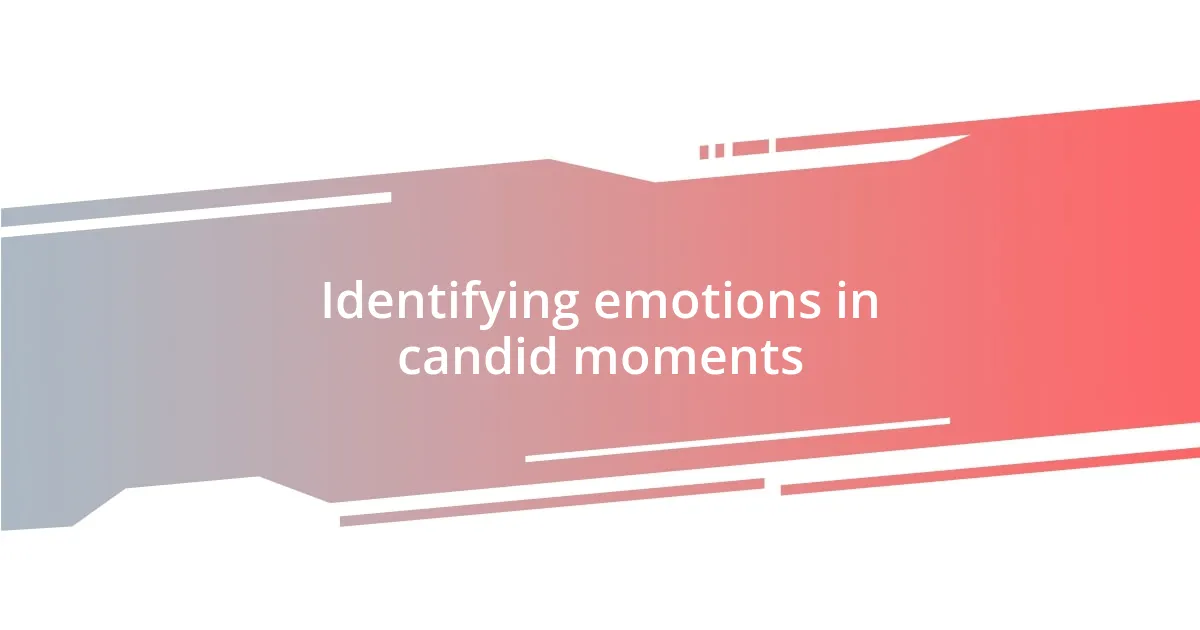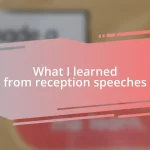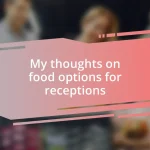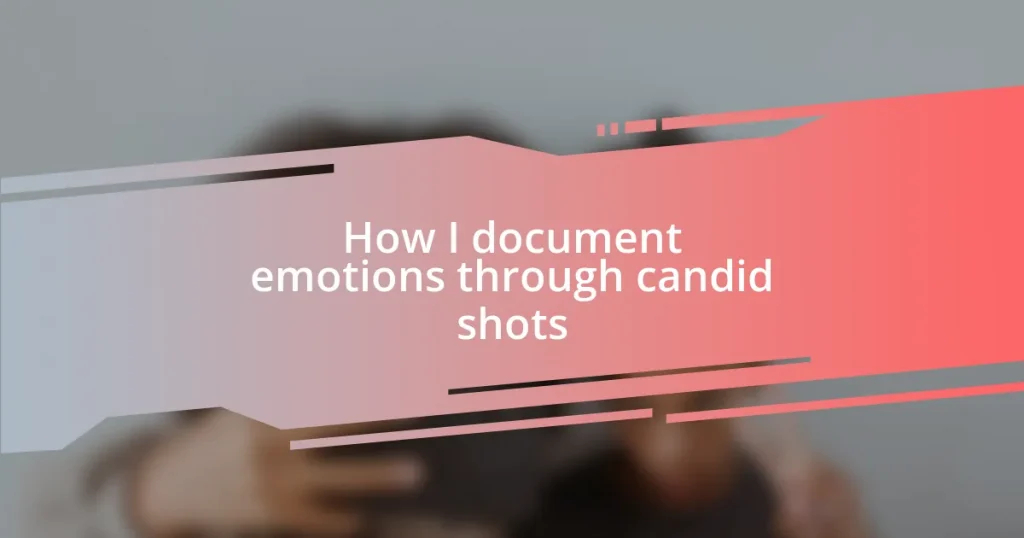Key takeaways:
- Candid photography requires blending into the environment and waiting for the right moment to capture genuine emotions.
- Identifying emotions involves keen observation of body language and micro-expressions, with context playing a key role in storytelling.
- Editing photos with adjustments in contrast, saturation, and focus can enhance emotional impact and transform a candid shot.

Understanding candid photography techniques
Understanding candid photography techniques involves both an awareness of your surroundings and a keen eye for genuine emotion. I remember a time when I was at a family gathering, and my cousin’s daughter was watching the fireworks. Capturing that moment, with her eyes wide and lips parted in awe, felt almost magical. Isn’t it those unguarded moments that truly tell a story?
One technique I find incredibly useful is blending into the environment. I often position myself where I am not a focal point—behind a group of friends or at the edge of a bustling event. This not only helps me capture authentic interactions but also gives me the chance to observe those little details, like a shared laugh or a knowing glance. Have you ever noticed how people behave differently when they think they’re not being watched?
Another essential aspect is timing. I’ve learned that patience is key in candid photography. There was an instance when I observed a couple holding hands during a sunset on the beach. Instead of rushing to take the photo, I waited. Suddenly, they leaned in for a kiss, and in that split second, I clicked the shutter, capturing the warmth of their affection. It reminds me that sometimes, the best shots come when you simply let the moment unfold.

Identifying emotions in candid moments
Identifying emotions in candid moments requires an acute sense of observation. I distinctly remember a powerful moment at a friend’s wedding when I noticed the bride’s mother subtly wiping away tears of joy. Capturing such a fleeting glimpse of sincere emotion not only enriched my collection but also deepened my understanding of the bonds shared among loved ones.
To effectively identify emotions, it helps to know what to look for. Body language and micro-expressions can be telling indicators. For instance, during a recent picnic, I spotted a child shyly laughing while peering out from behind her dad. That innocent joy, conveyed through her hesitation and giggle, was a reminder that emotions often lie beneath the surface. Have you ever caught that delightful and authentic smile that lights someone’s eyes?
Lastly, context plays a pivotal role in interpreting emotions. Each candid shot captures not just a moment but a narrative. I remember snapping a photo of my friends deep in conversation at a coffee shop. Their expressions, ranging from thoughtful frowns to bursts of laughter, told a much larger story about connection and camaraderie—proof that genuine emotions can often be felt before they are seen.
| Emotion | Indicator |
|---|---|
| Joy | Smiles, laughter, sparkling eyes |
| Sadness | Tears, frowning, withdrawn posture |
| Surprise | Wide eyes, raised eyebrows, dropped jaw |
| Anger | Furrowed brows, clenched fists, tense body |

Editing photos to enhance emotion
Editing photos to evoke stronger emotions can truly transform a candid shot. I often find that subtle adjustments in contrast and saturation do wonders. For instance, I meticulously enhanced a photo of a sunset with my friends—boosting the warmth made their laughter feel even more infectious. Have you ever edited a photo and felt it come alive in a way you hadn’t expected?
Color grading is another powerful tool in my editing toolkit. By shifting the hues to cooler tones, I once turned a simple moment of solitude into a hauntingly beautiful scene. The image of a friend lost in thought in a quiet park suddenly carried an air of melancholy that hadn’t been present in the original. Isn’t it fascinating how color can shape our emotional response?
Focus is crucial too. I often use a slight blur on the background to draw attention to the subject’s expressions. I remember capturing the intimate moment of my grandmother’s face as she reacted to a surprise birthday party. Slightly blurring the surroundings not only highlighted her joy but made the moment feel timeless. Editing, when done thoughtfully, allows us to tell stories that resonate—don’t you agree?















